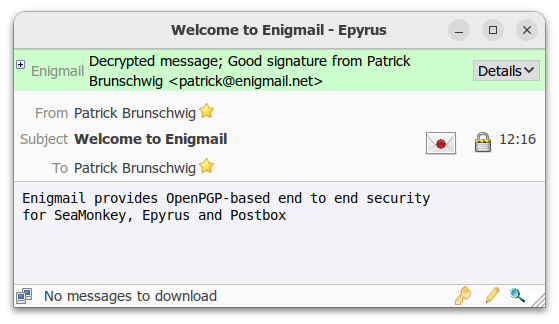E-mail by its ancient nature is open to be read by anyone managing a server on either end and often the transit layers are not even encrypted. This is why governments and corporations should not be sending anything classified or compromising via e-mail. Many corporate entities also route their mail (for spam and malware cleansing) via the US owned Mimecast which technically means this entity could read those mails (if the US legally compelled them to) no matter which way they flow (in or out of an organisation using Mimecast).
However, if e-mail in encrypted on the client side with free OpenPGP before it was sent, and only decrypted by the end user when receiving it, it travels securely no matter where it passes through. OpenPGP can also be used for "signing" a non-encrypted mail. For end-to-end encryption the recipient of course must also have OpenPGP to decrypt and read the message.
Products such as Mailvelope (browser extension) and Enigmail (add-on for Thunderbird) make this very easy to use once setup. Only downside is Mailvelope I see has limited Google logins for authenticating with a Google login for Gmail but I’m getting by perfectly well with Thunderbird which connects to my GMail.
See Mailvelope
#technology #security #encryption
Mailvelope Open Source Projekt. OpenPGP im Browser.
Do you want to send your digital letters as post cards? Probably not. Sending unencrypted emails is like sending post cards – anyone and any system that process your mails can read its content. If you encrypt your emails, you put your message into an envelope that only the recipient of the email can open. Enigmail is a seamlessly integrated…


